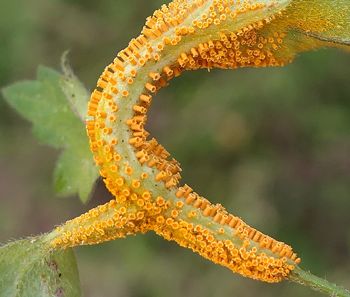
Puccinia sp. (rust)
| The orange spore-producing fruiting structures of this fungus emerging from a stem gall on Old Man's Beard (Clematis drummondii) are called aecidia. Rusts such as this are usually heteroecious, meaning they require two unrelated hosts to complete their life cycle. |

Trametes gibbosa (lumpy bracket fungus)
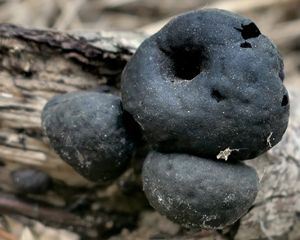
Annulohypoxylon truncatum (fungus)

Schizophyllum commune & Platydema sp.
(common split gill & darkling beetle larvae)
| Although this mushroom was relatively old and dry, it still had insects feeding on it. The hair-like structures are apparently fecal filaments produced by the larvae. I tried to learn more about this but all the online references I found were blocked by pay-to-view options. |
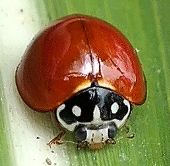
Cycloneda sanguinea (red lady beetle)
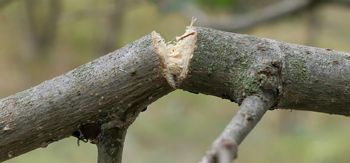
Oncideres cingulata (twig girdler damage)
| The longhorn beetle that did this used her jaws to sever the outer layers of the branch in order to provide her larvae with the dead wood they feed upon (her eggs were laid in the segment to the left). It is very common to see the branch tips lying on the ground after they break off, but this one hasn't yet detached. |
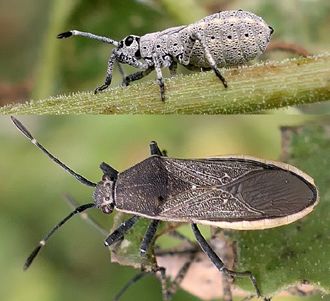
Catorhintha texana (coreid bug nymph & adult)

Narnia femorata (cactus bug)
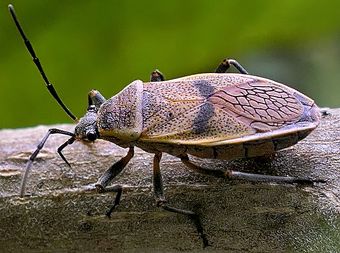
Largus maculatus (largus bug)
| I had previously encountered this Largus species only in south Texas, and it has more recently been observed in San Antonio and Houston, but this year it was quite abundant at Hornsby and in at least one location in south Austin. |
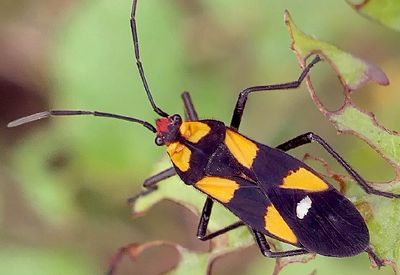
Oncopeltus sexmaculatus (six-spotted milkweed bug)

Niesthrea louisianica (scentless plant bug nymphs)
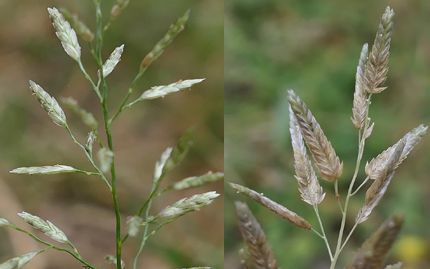
Eragrostis intermedia & Eragrostis cilianensis
(plains lovegrass & stinkgrass)
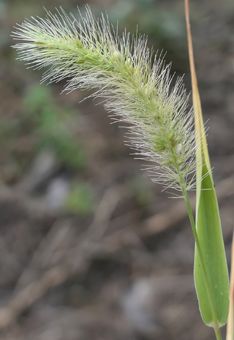
Setaria viridis (green bristlegrass)

Croton texensis (Texas croton)
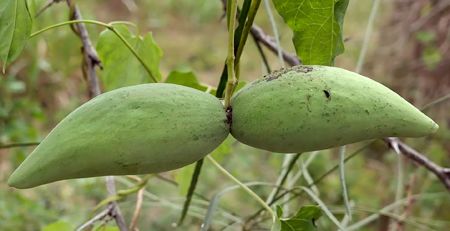
Cynanchum racemosum (talayote)

Zanthoxylum clava-herculis (Hercules club bark)
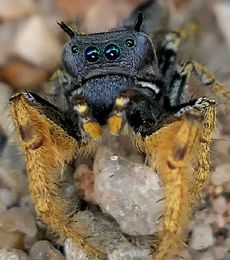
Phidippus arizonensis (Arizona jumper, male)
| While the males and females of some spiders look quite similar, others have conspicuous sexual dimorphism. The females of these two jumping spiders (above and below) are so different from their male counterparts that a novice could easily mistake them for unrelated species. |
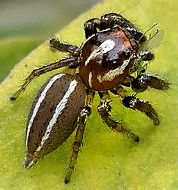
Colonus puerperus (jumping spider, male)
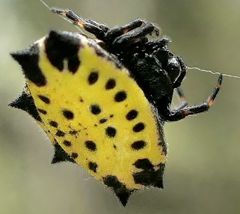
Gasteracantha cancriformis
(spiny-backed orbweaver, female)
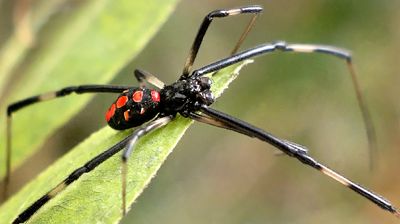
Latrodectus mactans (southern black widow, male)
| Female black widows can deliver a defensive bite with enough venom to cause serious symptoms but males never do so. It might be because of their smaller size or that they simply don't bite; since they are not dangerous, nobody seems to have bothered researching this. |
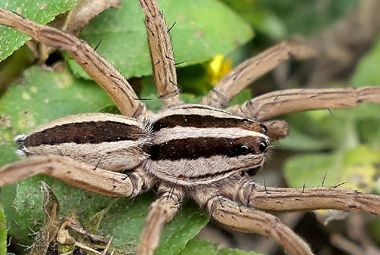
Rabidosa punctulata (dotted wolf spider)
| This spider closely resembles its relative, Rabidosa rabida, but that species has tan chevron marks along the center stripe on the abdomen. If this spider were flipped upside-down, the spots that inspired its name would be clearly visible - on its belly! |

Pisaurina mira (nursery web spider)
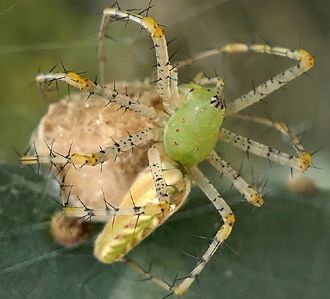
Peucetia viridans (green lynx protecting egg sac)
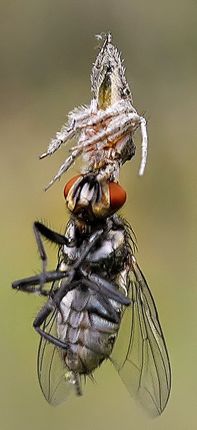
Hamataliwa grisea (gray lynx eating fly)
| Harvestmen, like the one shown below, are arachnids but they are not spiders (see above examples), which can produce silk, are venomous predators and have two obvious body segments. Besides lacking venom, harvestmen are scavengers, cannot produce silk, and their body segments are not clearly delineated. |
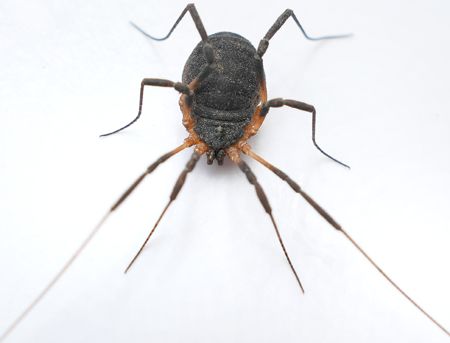
Eumesosoma roeweri (harvestman)
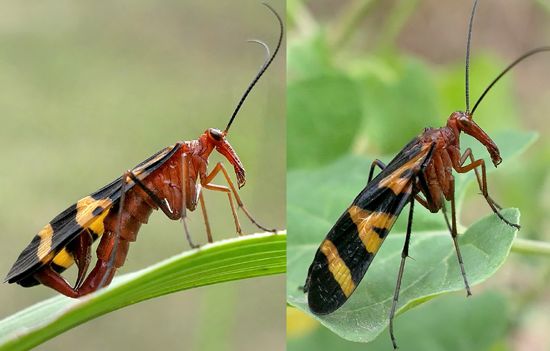
Panorpa nuptialis (scorpionflies, male & female)
| Scorpionflies are classified in the order Mecoptera, the placement of which is between flies (Diptera) and fleas (Siphonaptera). The male's distinctive tail is not capable of stinging. It does, however, grip forceps-like around the female when they mate. These insects, which only appear in the late autumn, are scavengers capable of removing prey from spider webs, a habit called kleptoparasitism. |

Lestes australis (southern spreadwing)
| As shown above, species in this genus often perch with their wings spread, just as dragonflies do. It makes identification more difficult, though, when they happen to hold their wings upright like most other damselflies. |

Dioprosopa clavata (flower fly)
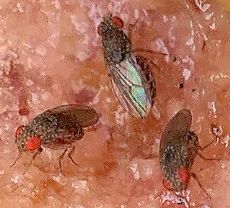
Drosophila repleta (vinegar flies)
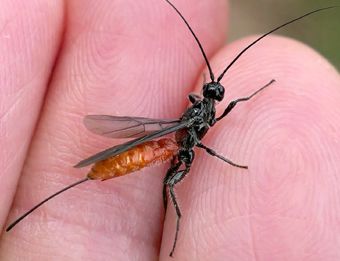
Unknown sp. (braconid wasp)
| Many female wasps possess a stinger, but it is not visible unless in use. The ovipositor on the braconid shown above is harmless, and the insect can be held without consequence. The worker ants shown below, on the other hand, deliver a very painful sting, so handling them is not recommended. |
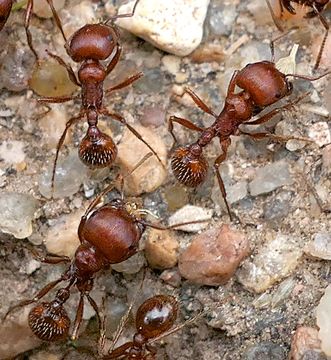
Pogonomyrmex barbatus (red harvester ants)
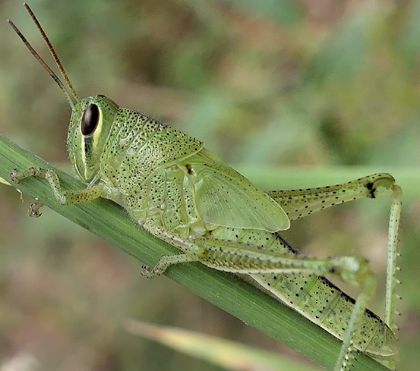
Schistocerca americana (American bird grasshopper nymph)

Aidemona azteca (Aztec spurthroat nymph)

Melipotis indomita (indomitable melipotis pupa)
| All caterpillars pupate, but not all create a silk cocoon in which to do so. Many species retreat under a leaf, piece of bark or rock to hide. This pupa was found simply lying on the ground. The black glob to the right is its shed larval skin. |
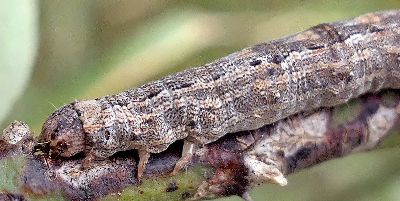
Melipotis indomita (indomitable melipotis larva)
| The next three caterpillars shown all have dense, stiff hairs but are harmless if touched as they do not possess venomous spines. The hairs probably provide some deterrent for predators and are an effective shield against parasitoid wasps and flies that need to surreptitiously contact the skin of their victim. |
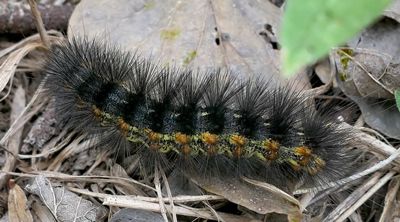
Estigmene acrea (salt marsh moth larva)

Hyphantria cunea (fall webworm larva)
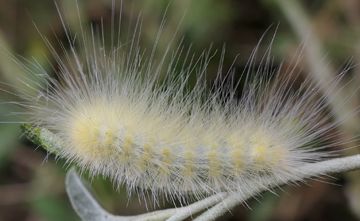
Spilosoma virginica (Virginian tiger moth larva)

Papilio cresphontes (giant swallowtail larva)
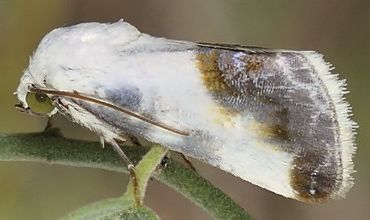
Acontia cretata (chalky bird-dropping moth)
| Bird dropping mimicry is obviously a very effective defense against avian predation, as it is present in numerous common beetle and moth species, including the two examples above. Whether the insect is larval or adult, all it takes to appear feces-like is mottled white/brown/gray coloration and an inclination to remain immobile during the day. |
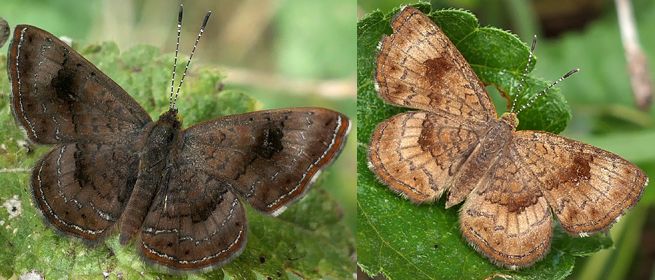
Calephelis nemesis (fatal metalmarks: variation)

Chlosyne nycteis (silvery checkerspot)

![]()








































